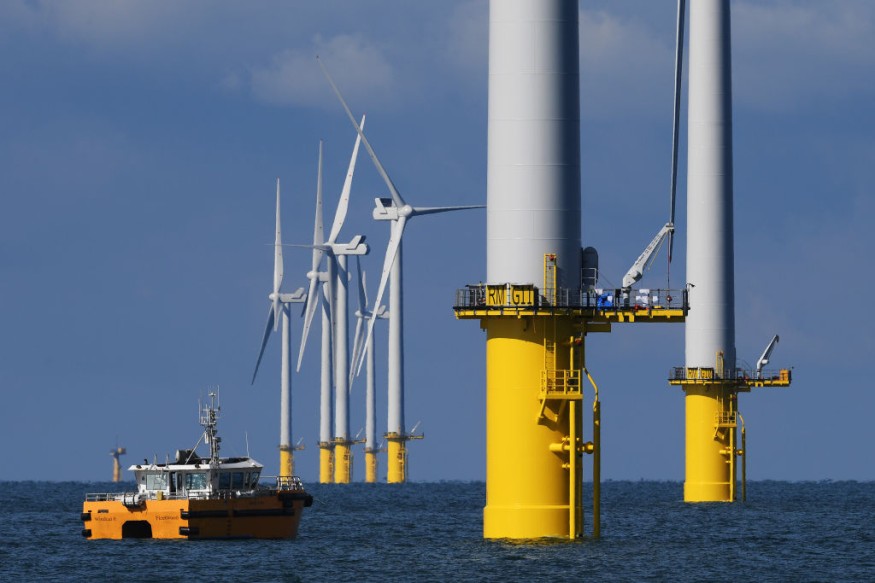
A bubble curtain was put in place since the largest green energy power plant's construction is producing noise pollution that may have an impact on marine life.
Bubble Curtains for the Largest Green Energy Power Plant
European countries are transforming the North Sea into the largest green energy hub with numerous offshore wind farms sprouting up. However, the deafening noise from construction harms marine wildlife, prompting the use of bubble curtains to protect creatures like porpoises and seals. These curtains, pioneered by Hydrotechnik Lübeck, shield animals from the clamor of pile-driving that secures turbine foundations into the seabed.
Jörn-Philip Pfeiffer from Hydrotechnik Lübeck highlighted the technology's adoption in Europe and globally, funded by Germany's environment ministry. Originally employed for containing oil spills, bubble curtains now aid in green energy endeavors, reducing CO2 emissions in Europe and emerging offshore markets like the USA and Taiwan.
The curtain operates like a bubbling jacuzzi around turbines, created by air pumped through a perforated hose on the seabed. This innovative solution minimizes noise pollution, showcasing a technological shift from compressed air barriers used in oil spill containment to safeguarding marine life during offshore wind farm construction.
Sound and The Bubble Curtain
The bubble curtain slows underwater sound waves by breaking them up, lessening their energy as they bounce against bubbles, safeguarding endangered harbor porpoises in the North and Baltic Seas. Researchers ensure noise stays at safe levels for these aquatic mammals.
North Sea countries aim to reach 300GW offshore wind capacity by 2050, but WWII munitions, roughly 1.6 million metric tonnes in German waters, pose a clearance challenge before construction. Controlled explosions precede pile driving, involving thousands of hydraulic hammer blows.
Quietening tech like bubble curtains effectively reduces noise, benefiting marine life. Monitoring measures like protected species observers and acoustic monitoring prevent construction when sensitive species are nearby, pausing pile-driving activities to avoid disruption.
The Rise of Wind Farms and Noise Pollution
Wind farms in the North Sea have soared to 4,000 from 80 in 2002, aiming for further expansion to meet global renewable energy goals. For the world to stay below the critical 1.5C warming limit, wind and solar energy must comprise 40% of global electricity by 2030, having reached 12% in 2022, notes Ember, a clean energy think tank.
Turbines, now exceeding 270 meters in height with blades spanning over 100 meters, are becoming larger amidst increasing production. The UK's Dogger Bank, set to be the world's largest wind farm, required a vessel taller than the Eiffel Tower for installation, contributing to substantial noise during transportation.
Pile-driving noise harms harbor porpoises, causing temporary or permanent deafness, disrupting their echolocation crucial for survival, and leading to disorientation and dangerous displacement up to 20km away from food sources.
Also Read : Artificial Photosynthesis Scaled Up Can Replace Solar Panels in Producing Limitless Clean Energy
Germany's wind turbine construction manages environmental impact well, staying below noise thresholds since 2014. Carina Juretzek of Germany's Federal Maritime and Hydrographic Agency credits a 99% noise reduction due to bubble curtains and steel sleeves around piles. Denmark and the Netherlands also implement porpoise-protecting regulations for wind farm developers.
Studies suggest offshore wind turbine noise is 10-20 dB lower than ship noise at sea frequencies. These turbines, typically distant from land, likely don't disturb shore communities. Underwater sound varies from biological, physical, and human-made sources, with offshore development labeled as "noise."
Impact on Wildlife
Underwater, hearing is vital for marine life communication. Noise causes diverse effects, from injury to hearing loss, masking crucial sounds, and unpredictable behavioral changes. Marine creatures vary in hearing abilities across frequencies, reacting differently to offshore wind farm noises.
Baleen whales excel at low frequencies, while dolphins at higher ones. Fish utilize sound for mating and safety, while invertebrates rely on it for mating and protection. Sea turtles detect mid-frequency sounds, although less is known about their hearing capabilities.
Related Article : Artificial Photosynthesis Scaled Up Can Replace Solar Panels in Producing Limitless Clean Energy
© 2025 NatureWorldNews.com All rights reserved. Do not reproduce without permission.





